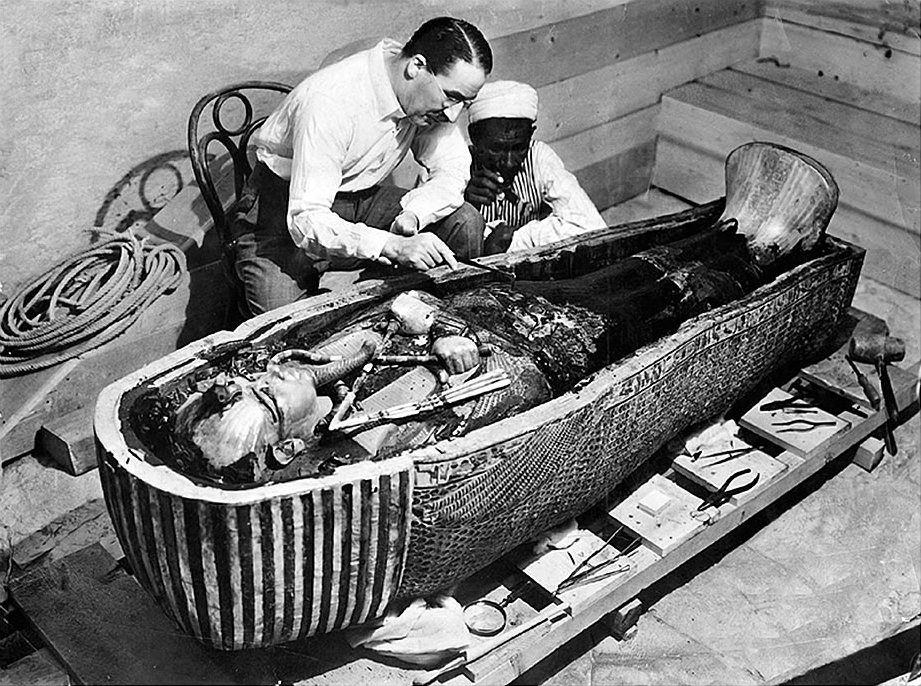
By Darren Smith, Weekend Contributor
While I maintain that the scientific community has for hundreds of years steadfastly failed to exercise a modern sense of decency and respect for human remains of the ancients, a recent article in Ars Technica prompted me to type my concern.
The objection I have is that most societies in the world currently place special value and reverence in the preserving and protection of interred human remains, often citing the desire to allow the departed the right to rest in peace. Yet, among governments, scientific organizations, academics, and museums we allow an abandonment of these values and permit the continual insult to the deceased–who’s remains serve as equivalents to rock samples and objects to be endlessly studied and displayed to the curious.
Would we allow such a spectacle to be exacted upon our own families?
Firstly, I do not want to convey any objection against Ars Technica, a publication I enjoy reading. They are simply a messenger. I do however take great exception to those who knowingly exhume human remains and shrines under the auspices of legality, when doing the same actions would be met with criticism and in some cases result in criminal prosecution. I have in the past been involved in criminal cases against those who desecrated grave sites and committed felonious exhumations from cemeteries, two of which resulted in prison sentences. Yet, I do find it to be a bit disingenuous that when an ordinary person desecrates a burial of an ordinary person, he gets a felony charge yet another person who finances the desecration of the tombs of ancient Kings enjoys a life peerage.
One has to wonder at what point the deceased no longer have standing to be protected through law, as though there is some form of statute of limitations for which a person (in the form of a human’s remains) no longer can expect the right to be left alone. Yet for ancient peoples, their post-mortem discovery seems to be in most cases an open invitation to pull them from the ground and relegate them to the humiliation of continual testing and encasement in storage bins at some laboratory.
According to the article, scientists studying the ancient remains of a person, a priest known as Nesyamun who lived under Ramses XI around 1100BC, used 3-D modeling technology to map the vocal tract to print a representation thereof in the hope of reconstructing what this man’s voice might sound like after factoring known samples from extant persons and their voices. What is noteworthy with Nesyamun’s remains is that he is renowned for being one of the best preserved examples of an ancient Egyptian mummy, and namely as “The Leeds Mummy”. For many decades, his remains have contributed to scientific study and display. Reportedly, “he suffered from gum disease, for instance, and may have died in his 50s from some kind of allergic reaction.”
Curators claim that Nesyamun had inscribed on his coffin a desire to be able in his afterlife to speak with the Gods, perhaps opportunistically those studying the remains took that as a request to have his vocal region mapped and studied. Or maybe it could stem from a great amount of vanity and hubris in thinking that they are now the Gods to whom Nesyamun waited three thousand years to speak.
I am more inclined to think he might if actually given such a voice presently, he would not exactly speak favorably to those who have desecrated him so decidedly. I suppose his response would be certainly undefined among Egyptologists’ and linguists’ vocabularies since I do not imagine the Rosetta Stone and subsequent sources made mention of a phrase that would adequately convey the anger manifest with a One Fingered Salute.
Still, there remains the politics of retaining the remains indefinitely. There often exists geopolitical tugs of war between inanimate objects taken a hundred or more years ago with no hope of return to the country of origin, since of course those national treasures were plundered “fair and square” by the more powerful of the two. Why should a human body be treated any better under this degree of indifference? After all it died a thousand years ago so who cares about him/her as a person. It is well beyond being a “them” (as opposed to a “we/us”), it is merely an “it” at this stage.
Furthermore, at what point has enough “study” taken place where the remains may be returned to their rightful place of rest? Is the quest to know anything of these people justified to such a granular degree that the importance of knowing what their penultimate meal choice was justifies our abandonment of the respect for deceased persons? These were living human beings at some point in time. They were loved, respected, worshiped, or befriended, by others just as each of us might be now. I fail to see how the rights of the ancients to a burial and rest according to their own preference is subservient to our own. We do not hold dominion over the souls of our ancestors.
We can do better than this.
By Darren Smith
The views expressed in this posting are the author’s alone and not those of the blog, the host, or other weekend bloggers. As an open forum, weekend bloggers post independently without pre-approval or review. Content and any displays or art are solely their decision and responsibility.
One thought on “When Will We Finally Treat Ancient Human Remains With Dignity?”
Comments are closed.